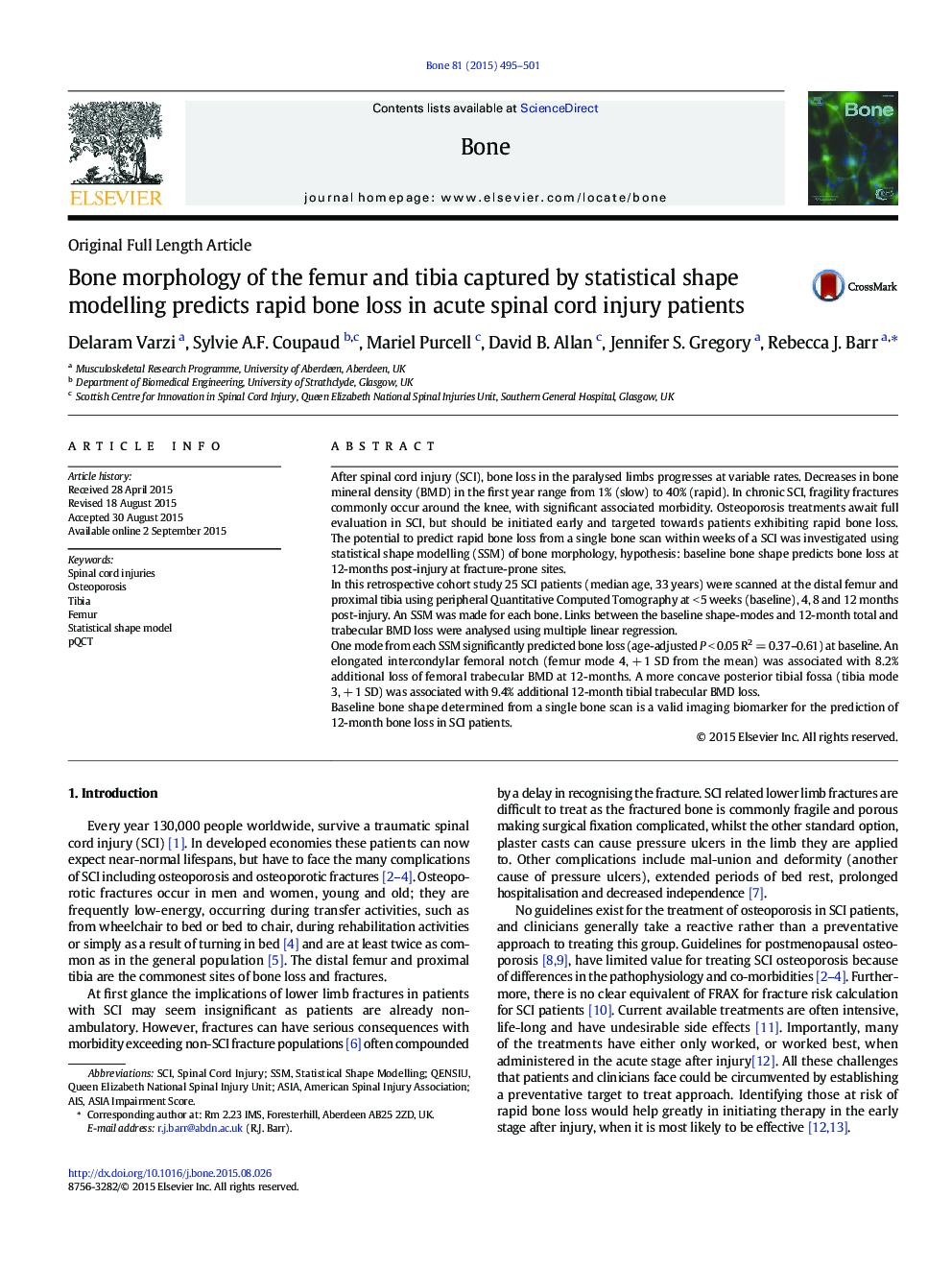| کد مقاله | کد نشریه | سال انتشار | مقاله انگلیسی | نسخه تمام متن |
|---|---|---|---|---|
| 5889329 | 1568138 | 2015 | 7 صفحه PDF | دانلود رایگان |

- Links between bone shape and bone loss following spinal cord injury were explored
- Images and BMD were taken from pQCT of the distal femur and proximal tibia
- Tibial trabecular BMD loss at 1Â year was predicted by a concave posterior tibial fossa
- An elongated intercondylar femoral notch predicted femoral trabecular BMD loss
- Baseline bone shape predicted 12-month bone loss in spinal cord injury patients
After spinal cord injury (SCI), bone loss in the paralysed limbs progresses at variable rates. Decreases in bone mineral density (BMD) in the first year range from 1% (slow) to 40% (rapid). In chronic SCI, fragility fractures commonly occur around the knee, with significant associated morbidity. Osteoporosis treatments await full evaluation in SCI, but should be initiated early and targeted towards patients exhibiting rapid bone loss. The potential to predict rapid bone loss from a single bone scan within weeks of a SCI was investigated using statistical shape modelling (SSM) of bone morphology, hypothesis: baseline bone shape predicts bone loss at 12-months post-injury at fracture-prone sites.In this retrospective cohort study 25 SCI patients (median age, 33Â years) were scanned at the distal femur and proximal tibia using peripheral Quantitative Computed Tomography at <Â 5Â weeks (baseline), 4, 8 and 12Â months post-injury. An SSM was made for each bone. Links between the baseline shape-modes and 12-month total and trabecular BMD loss were analysed using multiple linear regression.One mode from each SSM significantly predicted bone loss (age-adjusted PÂ <Â 0.05 R2Â =Â 0.37-0.61) at baseline. An elongated intercondylar femoral notch (femur mode 4, +Â 1 SD from the mean) was associated with 8.2% additional loss of femoral trabecular BMD at 12-months. A more concave posterior tibial fossa (tibia mode 3, +Â 1 SD) was associated with 9.4% additional 12-month tibial trabecular BMD loss.Baseline bone shape determined from a single bone scan is a valid imaging biomarker for the prediction of 12-month bone loss in SCI patients.
Journal: Bone - Volume 81, December 2015, Pages 495-501